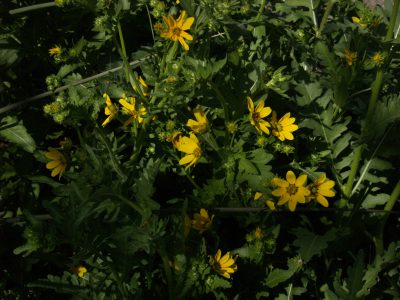Why are wildflowers sparse this spring?
The reason is our lack of fall and winter rain. Spring-flowering wildflowers release their seeds in summer, then, ideally, those seeds sprout with the onset of rain in the fall.
But when we don’t get any rain in the fall, the seeds are still there, in the soil, and will wait for better conditions to sprout.
In fact, bluebonnets have a hard seed coat, which doesn’t break down easily, thus ensuring that the seed only germinates when the environment is most likely to be ideal for the new seedling.
As we talked about earlier this year regarding bluebonnets, if you have wildflowers in your landscape, you’re subject to the same rules of nature, but you’re also more able to manipulate your environment. So if your wildflowers are a bit sparse this year, you’ll need to remember to watch the weather next fall and winter, and water if we aren’t getting any rain.
If you want to plant any new spring-blooming wildflowers, remember, the time to scatter seed is late summer into early fall, not the spring.
But it’s not too late to plant transplants of coreopis, blanket flower, columbine and blackfoot daisy. If you don’t have a spot for them, try some in containers. Just be sure to use a well-drained, porous potting mix, and not too large a container. Our wildflowers traditionally grow in shallow, even rocky soils, so they will not thrive in very deep containers, full of rich soil. If you don’t plant in taller containers, just be sure not to overwater, since the soil below the root zone will stay wet and will encourage rot.

 Laura Stewart
Laura Stewart Daphne Richards
Daphne Richards
 John Dromgoole
John Dromgoole